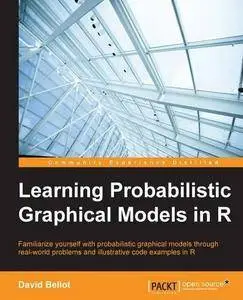David Bellot, "Learning Probabilistic Graphical Models in R"
English | ISBN: 1784392057 | 2016 | PDF/EPUB/MOBI | 250 pages | 4 MB/7 MB/11 MB
English | ISBN: 1784392057 | 2016 | PDF/EPUB/MOBI | 250 pages | 4 MB/7 MB/11 MB
Key Features
Predict and use a probabilistic graphical models (PGM) as an expert system
Comprehend how your computer can learn Bayesian modeling to solve real-world problems
Know how to prepare data and feed the models by using the appropriate algorithms from the appropriate R package
Book Description
Probabilistic graphical models (PGM, also known as graphical models) are a marriage between probability theory and graph theory. Generally, PGMs use a graph-based representation. Two branches of graphical representations of distributions are commonly used, namely Bayesian networks and Markov networks. R has many packages to implement graphical models.
We'll start by showing you how to transform a classical statistical model into a modern PGM and then look at how to do exact inference in graphical models. Proceeding, we'll introduce you to many modern R packages that will help you to perform inference on the models. We will then run a Bayesian linear regression and you'll see the advantage of going probabilistic when you want to do prediction.
Next, you'll master using R packages and implementing its techniques. Finally, you'll be presented with machine learning applications that have a direct impact in many fields. Here, we'll cover clustering and the discovery of hidden information in big data, as well as two important methods, PCA and ICA, to reduce the size of big problems.
What you will learn
Understand the concepts of PGM and which type of PGM to use for which problem
Tune the model's parameters and explore new models automatically
Understand the basic principles of Bayesian models, from simple to advanced
Transform the old linear regression model into a powerful probabilistic model
Use standard industry models but with the power of PGM
Understand the advanced models used throughout today's industry
See how to compute posterior distribution with exact and approximate inference algorithms



